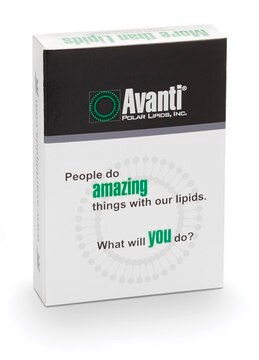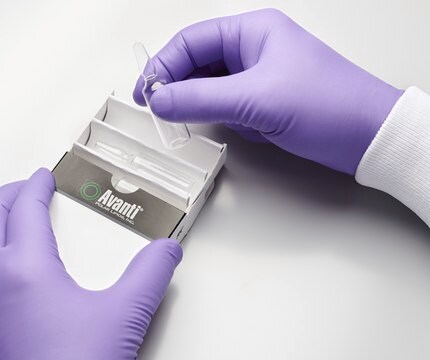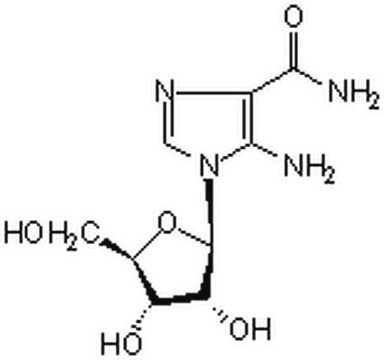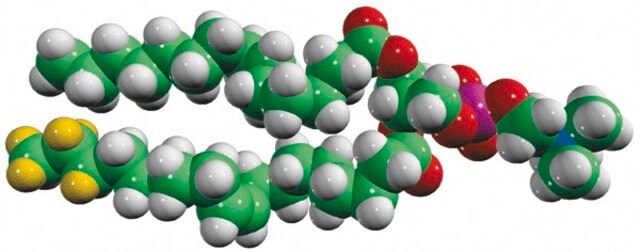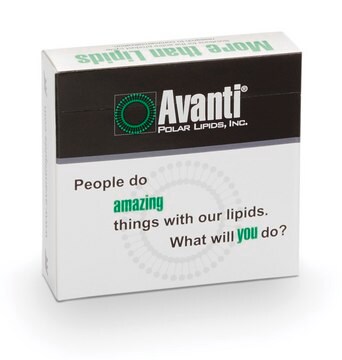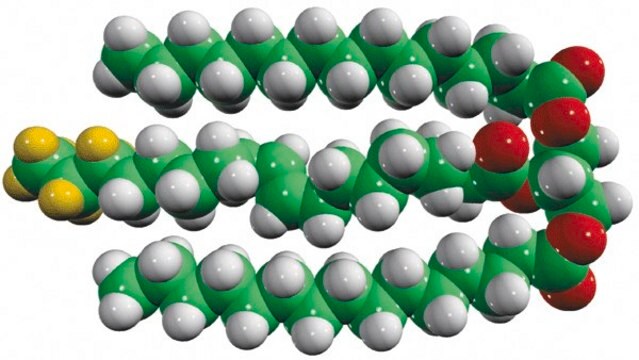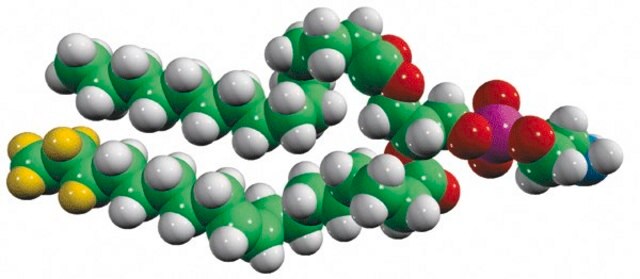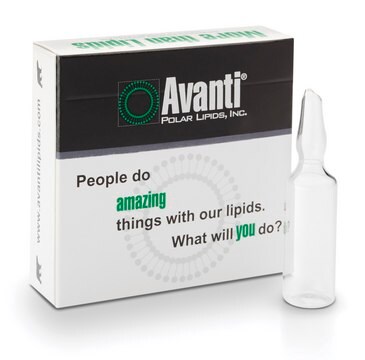330707
Avanti
SPLASH™ LIPIDOMIX™ Mass Spec Standard
Avanti Research™ - A Croda Brand
Synonym(s):
SPLASH™ LIPIDOMIX™ Mass Spec Standard, Single-vial Prepared Lipidomic Analytical Standard for Human plasma lipids
About This Item
Recommended Products
form
methanol solution
packaging
pkg of 1 × 1 mL (330707-1EA)
manufacturer/tradename
Avanti Research™ - A Croda Brand
concentration
1 mg/mL (330707-1EA)
technique(s)
mass spectrometry (MS): suitable
application(s)
lipidomics
metabolomics
shipped in
dry ice
storage temp.
−20°C
Looking for similar products? Visit Product Comparison Guide
General description
Application
- as an internal standard for non-alcoholic fatty liver disease (NAFLD) signature analysis from mice and human samples
- as an internal standard in the quantification of phospholipids from duodenum, liver, and adipose tissue using ultra performance liquid chromatography quadrupole-time of-flight mass spectrometry (UPLC-q-Tof MS)
- in human cell lines prior to lipid analysis by liquid chromatography-mass spectrometry (LC-MS) analysis
Features and Benefits
- Save time: pre-mixed internal standards.
- Save money: 1 vial is sufficient for 100 plasma samples.
- Exact concentrations provided for quantitative lipidomic analysis.
- Applicable to multiple MS approaches.
- Concentration of each lipid class optimized for plasma analysis.
Packaging
Components
Mixture ComponentTarget Conc. (μg/mL)
- 15:0-18:1(d7) PC160
- 15:0-18:1(d7) PE5
- 15:0-18:1(d7) PS5
- 15:0-18:1(d7) PG30
- 15:0-18:1(d7) PI10
- 15:0-18:1(d7) PA7
- 18:1(d7) LPC25
- 18:1(d7) LPE5
- 18:1(d7) Chol Ester350
- 18:1(d7) MG2
- 15:0-18:1(d7) DG10
- 15:0-18:1(d7)-15:0 TG55
- 18:1(d9) SM30
- Cholesterol (d7)100
Legal Information
Kit Components Also Available Separately
- 791637C15:0-18:1-d7-PC, Avanti Research™ - A Croda Brand 160μg/mLSDS
- 791638C15:0-18:1-d7-PE, Avanti Research™ - A Croda Brand 5μg/mLSDS
- 791639C15:0-18:1-d7-PS, Avanti Research™ - A Croda Brand 5μg/mLSDS
- 791640C15:0-18:1-d7-PG, Avanti Research™ - A Croda Brand 791640C 30μg/mLSDS
- 791641C15:0-18:1-d7-PI, Avanti Research™ - A Croda Brand 10μg/mLSDS
- 791642C15:0-18:1-d7-PA, Avanti Research™ - A Croda Brand 7μg/mLSDS
- 791643C18:1-d7 Lyso PC, Avanti Research™ - A Croda Brand 25μg/mLSDS
- 791644C18:1-d7 Lyso PE, Avanti Research™ - A Croda Brand 791644C 5μg/mLSDS
- 791645C18:1-d7-cholesterol, Avanti Research™ - A Croda Brand 791645C 350μg/mLSDS
- 791646C18:1-d7 MG, Avanti Research™ - A Croda Brand 791646C 2μg/mLSDS
- 791647C15:0-18:1-d7 DG, Avanti Research™ - A Croda Brand 791647C 10μg/mLSDS
- 791648C15:0-18:1-d7-15:0 TG, Avanti Research™ - A Croda Brand 791648C 55μg/mLSDS
- 791649C18:1-d9 SM, Avanti Research™ - A Croda Brand 30μg/mLSDS
- 700041Pcholesterol-d7, Avanti Research™ - A Croda Brand 100μg/mLSDS
also commonly purchased with this product
Signal Word
Danger
Hazard Statements
Precautionary Statements
Hazard Classifications
Acute Tox. 3 Dermal - Acute Tox. 3 Inhalation - Acute Tox. 3 Oral - Flam. Liq. 2 - STOT SE 1
Target Organs
Eyes,Central nervous system
Storage Class Code
3 - Flammable liquids
WGK
WGK 2
Flash Point(F)
49.5 °F - closed cup
Flash Point(C)
9.7 °C - closed cup
Choose from one of the most recent versions:
Certificates of Analysis (COA)
It looks like we've run into a problem, but you can still download Certificates of Analysis from our Documents section.
If you need assistance, please contact Customer Support.
Already Own This Product?
Find documentation for the products that you have recently purchased in the Document Library.
Customers Also Viewed
Our team of scientists has experience in all areas of research including Life Science, Material Science, Chemical Synthesis, Chromatography, Analytical and many others.
Contact Technical Service